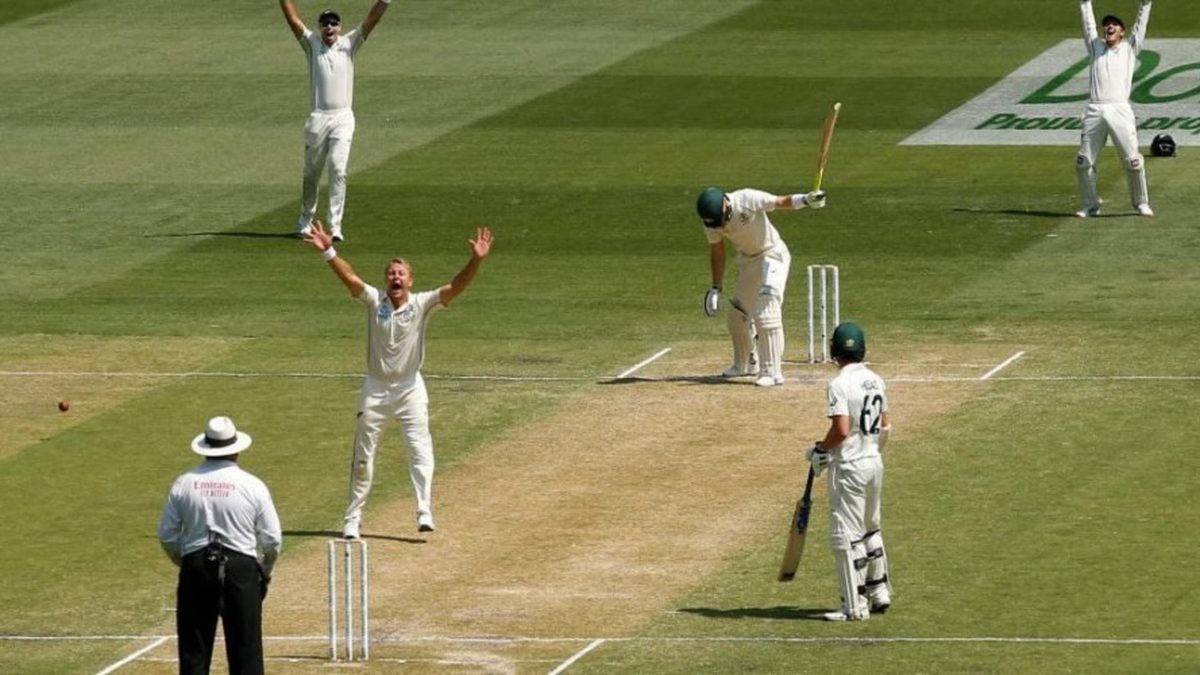
Tim Paine‘s long wait for his maiden Test century extended, after he was dismissed lbw to a debatable DRS call on 79, against New Zealand in Melbourne.
Playing his 30th Test, Paine stitched together a 150-run stand with centurion Travis Head to hoist Australia to a 400-plus total, and looked set for his first three-digit score in Tests when he was rapped on the front pad by a Neil Wagner in-swinger.
On-field umpire Marais Erasmus withheld New Zealand’s appeal, with the impact seemingly outside the line of the off stump, but was forced into a DRS review by Kane Williamson. “To the naked eye, it looked like it hit him just outside the line,” opined the on-air commentator.
What a fantastic review by New Zealand! Tim Paine's wait for a Test century goes on… #SpecsaversCricket @SpecsaversAU | #AUSvNZ pic.twitter.com/RAj0OKFe6t
— cricket.com.au (@cricketcomau) December 27, 2019
Replays suggested that the ball had struck the outside part of the pad, right above Paine’s knee roll, seemingly justifying the umpire’s call, but the ball tracker animation displayed the ball hurtling into the side of the pad, and clipping the top of the middle stump.
With the tracker suggesting that the ball would hit the stumps, and the impact in-line, third umpire Aleem Dar flashed three reds and asked Erasmus to reverse his decision.
[breakout id=”0″][/breakout]
However, not everyone was convinced with the trajectory of the ball displayed on the tracker, arguing that the point of impact on the animation did not match the actual striking point that could be seen in replays.
https://twitter.com/alvey5/status/1210425064769765376
Tim Paine has been absolutely dudded. It’s hit him on the outside of the pad but DRS is saying that it hit him on the inside… This is the type of thing that turns people off technology #AUSvNZ pic.twitter.com/jknvGGM9PP
— Eden Richards (@Eden_Richards) December 27, 2019
Two overs later, there was another lbw call, this time against Travis Head, who was then on 104. A Wagner delivery from over the wicket struck Head on the back pad, and the impact was found to be in line, but the tracker concluded that it was the umpire’s call, as a result of which the on-field decision of ‘not out’ stood.
Tim Paine = OUT.
Travis Head = NOT OUT.Got it? 🤔🧐#AUSvNZ live blog: https://t.co/bXqr2GBhn5#DRS pic.twitter.com/xHDkmeY17n
— News Cricket (@NewsCorpCricket) December 27, 2019
Paine’s dismissal, just after tea, kickstarted an Australian collapse: they hurtled from 434-5 to 467 all out. Call it an excellent review by Williamson, or dubious technology in play, but the DRS debate will continue.







